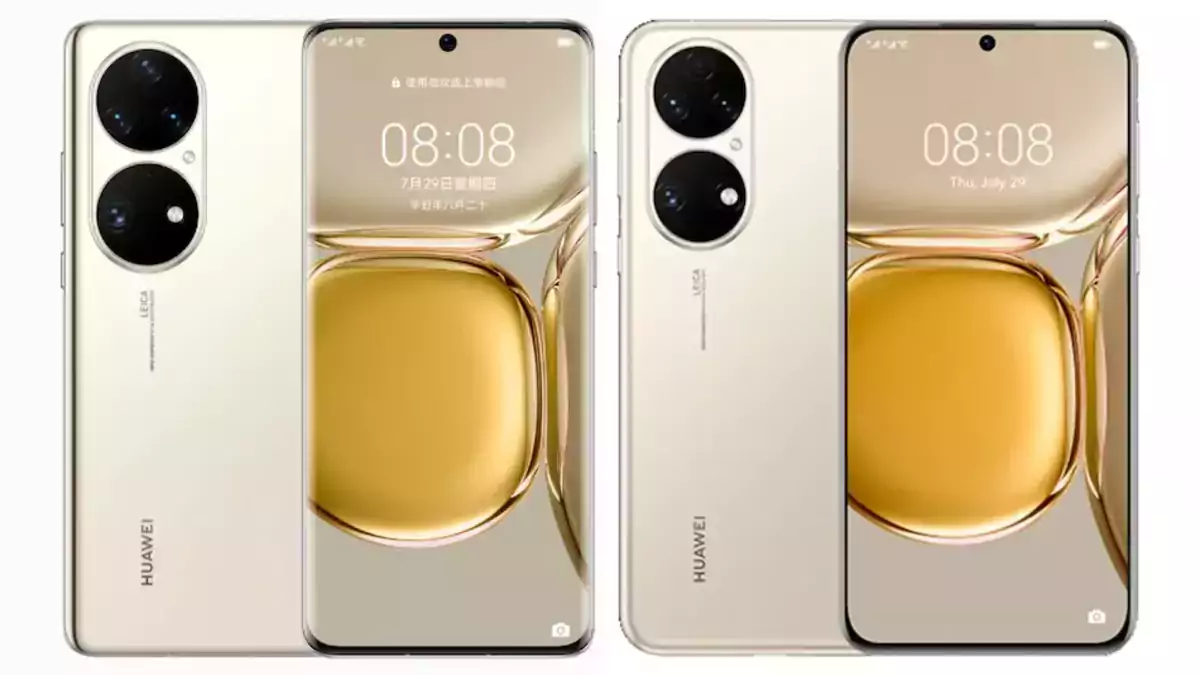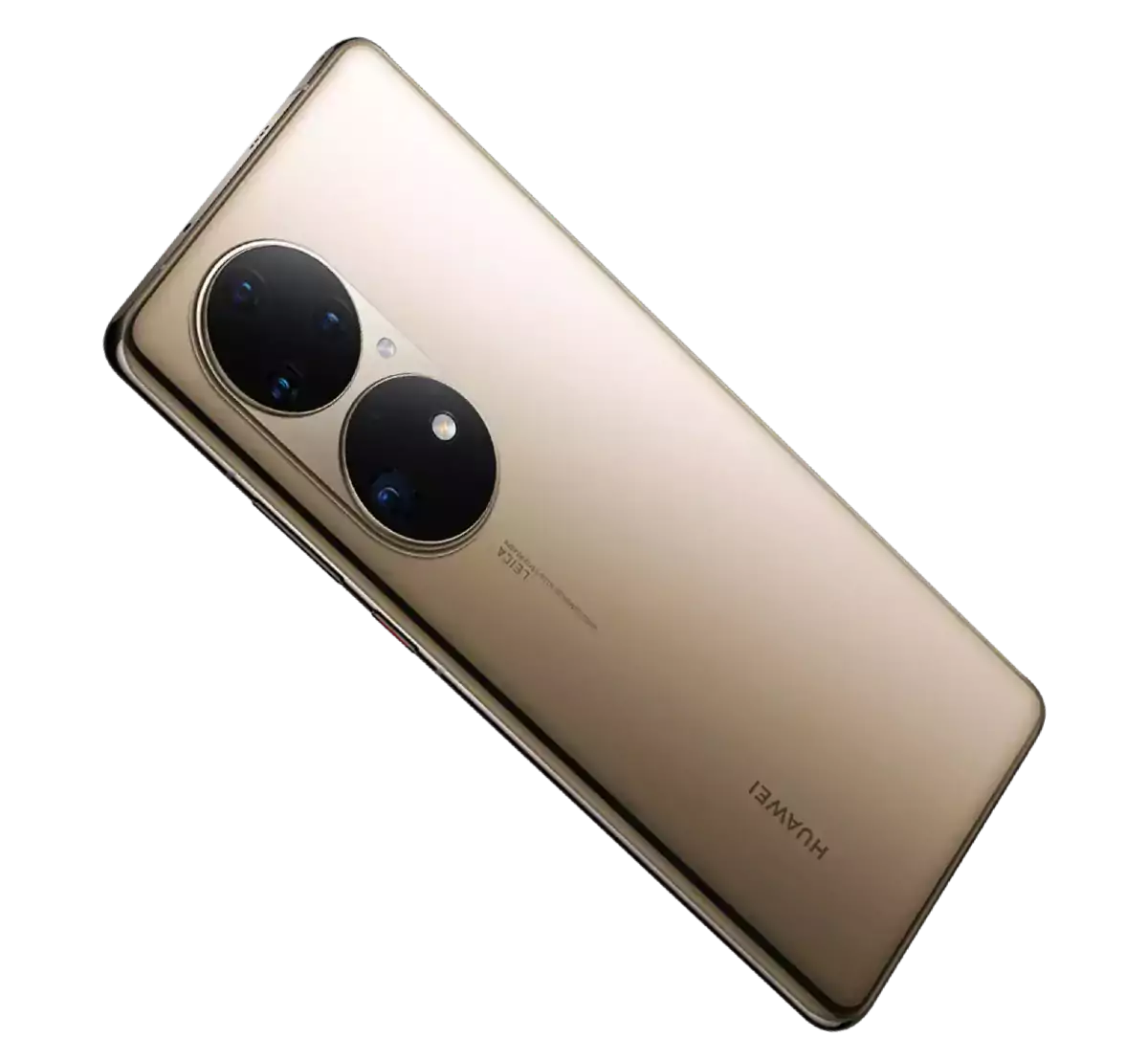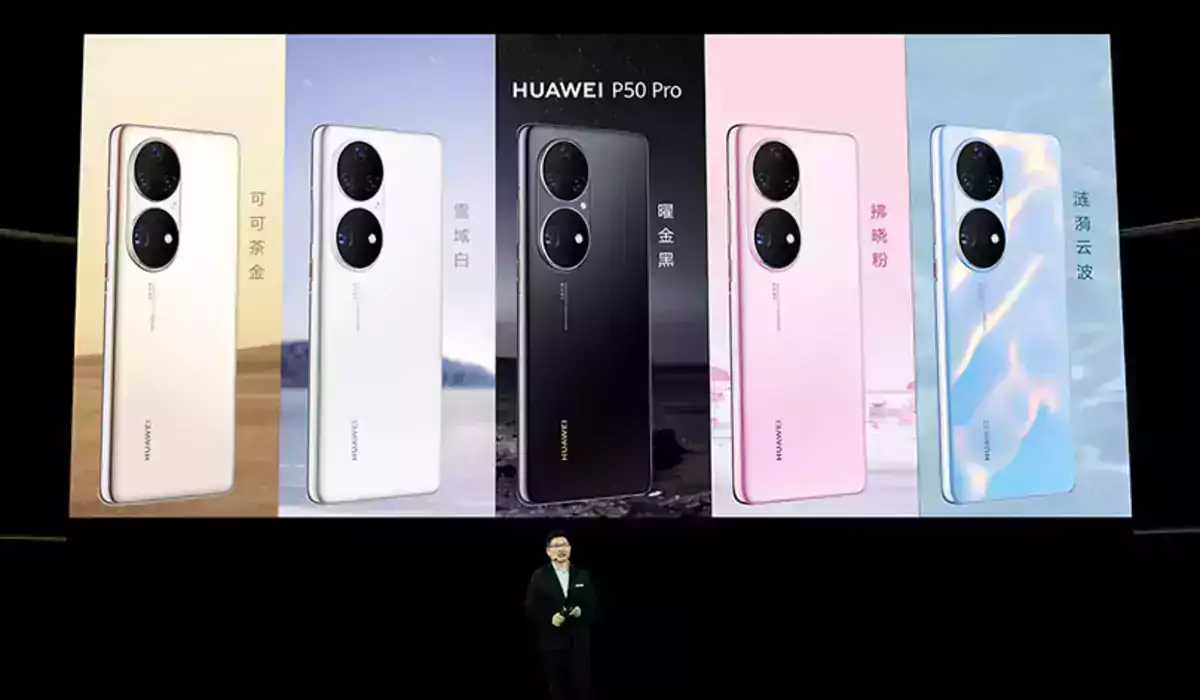Huawei has launched its latest flagship smartphones – P50 and P50 Pro – for the market in China, and some of the phones have been built on Snapdragon 888. The launch also marks the launch of first major phones running on HarmonyOS.
Huawei’s launch of the P50 series is a little delayed, due to the sanctions that the US placed on Huawei. The sanctions impacted the production of the new phones as Huawei was unable to purchase chips among other components from companies that had been using the tech from the US.
The sanctions have also made it so that if Huawei were to launch the P50 series outside of China, then it would not contain any apps or services provided by Google.
What Huawei has in its favour is the fact that it has eliminated the Android base for the phone itself, running it on HarmonyOS instead, which solves some of the problems.
“The HUAWEI P Series has always been about our passion for, and pursuit of, the best quality, aesthetics and photography experiences,” said Richard Yu, Executive Director and Chief Executive Officer of Huawei Consumer BG.
“The new HUAWEI P50 Series is a legend reborn, representing a new chapter in Huawei’s history of camera excellence, as well as a paradigm shift in mobile photography, aesthetic design and all-scenario experiences.
Incorporating HUAWEI XD Optics into a smartphone for the first time, we are continuing to make the impossible possible while kicking off a new era of smartphone photography.”
While Huawei P50 is based on Snapdragon 888, P50 Pro is available in two SoC variants – Kirin 9000 and Snapdragon 888. Though both the SoCs have the capability of supporting 5G, the phones only offer 4G connectivity.
P50 Pro is the premium model and has a 6.6-inch OLED display with 120Hz refresh rate and 1228p resolution, along with a 4,360mAh battery. On the other hand, P50 has a 6.5-inch 90Hz OLED display with a 1224p resolution. The P50 has a 4,100mAh battery.
Both the models support fast charging from a wire at 66W, but on Pro supports wireless charging at 50W. Both the models also have NFC support.
As far as optics are concerned, Pro has four rear cameras, with a 50 MP main camera, a 64 MP telephoto with an optical zoom of 3.5x, a 40 MP monochrome camera, and a 13 MP ultrawide camera. P50 on the other has three rear cameras – a 50 MP main camera, supported by a 12 MP telephoto camera with a 5x optical zoom, and a 13 MP ultrawide camera. The front cameras on both the models are 13 MP.
The HUAWEI P50 Series’ Dual-Matrix Camera system delivers True to Life imagery with extreme clarity and high dynamic range. Balancing the capabilities of multiple lenses, 10-channel multi-spectrum sensor, HUAWEI XD Optics, XD Fusion Pro Image Engine and other innovations, the Dual-Matrix Camera system offers incredible photography capabilities in a lightweight form factor.
Huawei debuted the XD Fusion Image Engine with the HUAWEI P40 Series, delivering a super definition photography experience. This time, the HUAWEI P50 Series launches with XD Fusion Pro, an improved solution that incorporates a new Super Colour Filter System, True-Chroma Image Engine and Super HDR technology to significantly improve detail, colour and dynamic range.

The HUAWEI P50 Pro supports an unprecedented 200 times zoom range, helping users capture any object regardless of distance. Close-up shots are bursting with detail, while zoomed shots up to 100 times are incredibly clear. The ultra-wide angle lens has an equivalent focal length of 13 mm for wide shots, and supports macro photography as close as 2.5 cm from the lens.
Both the P50 and P50 Pro have not one but two camera bumps, which together take up more than a third of the phone’s rear width.
The HUAWEI P50 Pro also has an all-new Super Colour Filter System, with the True-Chroma Camera (Colour) and True-Chroma Camera (Monochrome) improving the main camera light intake by 103 percent for better image clarity. In low-light scenarios, pictures come out brighter and more detailed.
In group photos, users can zoom in on individual subjects and still see sharp details and textures on every person. The Super HDR technology captures 28 percent more of the dynamic range for better backlit performance, while light and shadows are optimised, creating richer textures and more pronounced layers.
The HUAWEI P50 Series supports 4K video recording across the full focal range. The all-new AIS Pro image stabilisation solution helps users easily capture stable handheld videos, even when zoomed-in 4K time lapse mode allows users to distil the beauty of time, while AI cinemagraph is great for creative shots that showcase minor movements.
For editing, users can import videos to PetalClip simply by tapping “Edit” in Gallery. The app features a flat UI design and offers a wealth of templates, filters and special effects, all of which can be instrumental in creating a cinematographic masterpiece.

HarmonyOS 2
Since it was launched on 2nd June, Huawei says that HarmonyOS 2 has been installed by more than 40 million users. Powered by HarmonyOS 2, the HUAWEI P50 Series comes with an all-new Home screen that is cleaner and more organised. Swiping up on an app icon activates Service Widgets, which present real-time information with a simple tap. The widgets’ size is also customisable, and users can personalise their Home screen with their widgets of choice.
Furthermore, users can find widgets that serve atomised services easily from the Service Centre. HarmonyOS 2 also offers a new zoom mode for files, so users can tap the icon in a folder to launch an app.
The Super Device interface in HUAWEI P50 Series’ Control Panel has a smartphone icon in the centre. There, users can connect other devices to the smartphone by dragging the corresponding icons towards the middle. For instance, office users can initiate Multi-screen Collaboration by dragging the tablet icon towards the smartphone icon in the UI.
The smartphone can also act as a wirelessly connected external storage for the PC and allow users to access smartphone files from their laptop. When playing a video, users can drag a smart TV icon towards the smartphone icon in the UI to project their active video to the larger display. Tapping ‘event alerts’ on the smartwatch will play the latest highlights directly on the paired phone, on supported apps.
The smartphone Control Panel also lets users easily set up internet connectivity for smart home appliances with just a simple drag and drop, making the whole experience smarter and more intuitive.
HarmonyOS 2 provides greatly improved system smoothness. Tapping, scrolling and other inputs are all responsive and stutter-free. Even after the device has been used for three years with little storage space left, it will still support read and write speeds as though it were new.
With the flagship Kirin 9000 and Snapdragon 888 4G, both built with a 5 nm process, HUAWEI P50 Series offers powerful performance to deliver a premium experience to consumers.
Huawei P50 Pro Special Edition
Normally, Huawei would launch a “Pro Plus” variant of its flagships. This year, though, the P50 Pro is the highest-end model for the general consumer. However, the company is launching a Special Edition model of the Huawei P50 Pro.
It comes with the Kirin 9000, 12GB of RAM, and 512GB of storage. However, it is unclear what else sets this apart from the top-end P50 Pro.
Huawei P50 series pricing
| Model | SoC | Memory and Storage | Price |
| HUAWEI P50 Pro (Special Edition) | Kirin 9000 | 12GB + 512GB | ¥ 8488 |
| HUAWEI P50 Pro | Kirin 9000 | 8GB + 256GB | ¥ 6488 |
| 8GB + 512GB | ¥ 7488 | ||
| 12GB + 512GB | ¥ 7988 | ||
| Snapdragon 888 4G | 8GB + 128GB | ¥ 5988 | |
| 8GB + 256GB | ¥ 6488 | ||
| 8GB + 512GB | ¥ 7488 | ||
| HUAWEI P50 | Snapdragon 888 4G | 8GB + 128GB | ¥ 4488 |
| 8GB + 256GB | ¥ 4988 |
Huawei 50 Series Specs
| Huawei P50 | Huawei P50 Pro | |
|---|---|---|
| Display | 6.5-inch OLED 2,700 x 1,224 resolution 90Hz refresh rate 300Hz touch sampling | 6.6-inch OLED 2,700 x 1,228 resolution 120Hz refresh rate 300Hz touch sampling |
| Processor | Qualcomm Snapdragon 888 (4G only) | Qualcomm Snapdragon 888 (4G only) or Kirin 9000 |
| RAM | 8GB | 8GB or 12GB |
| Storage | 128GB or 256GB No expandable storage | 128GB, 256GB, or 512GB No expandable storage |
| Power | 4,100mAh battery 66W wired charging No wireless charging | 4,360mAh battery 66W wired charging 50W wireless charging |
| Cameras | Rear: – 50MP main (ƒ1.8) – 13MP ultra-wide (ƒ2.2) – 12MP telephoto (ƒ3.4, OIS, AF) Front: – 13MP main (ƒ2.4) | Rear: – 50MP main (ƒ1.8, OIS) – 13MP ultra-wide (ƒ2.2) – 64MP telephoto (ƒ3.5, OIS, AF) – 40MP monochrome (ƒ1.6) Front: – 13MP main (ƒ2.4) |
| Durability | IP68 rated | IP68 rated |
| Software | Harmony OS 2.0 | Harmony OS 2.0 |
| Dimensions & weight | 156.5 x 73.8 x 7.9mm 181g | 158.8 x 72.8 x 8.5mm 195g |
| Colors | Golden Black Cocoa Gold Pearl White | Golden Black Cocoa Gold |
While the Pro model will go on sale in China on August 12 this year, the P50 model will go on sale some time in September. In the Pro models, though, the Kirin 9000 processor will begin shipping first, and the Snapdragon models will begin shipping at the end of 2021.



